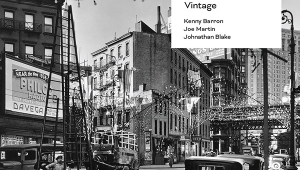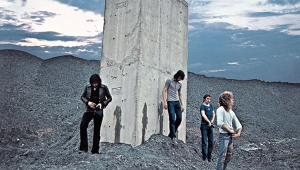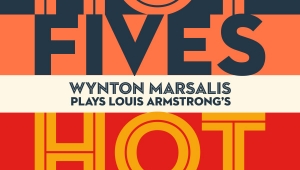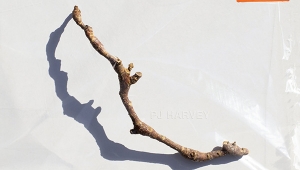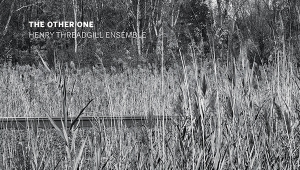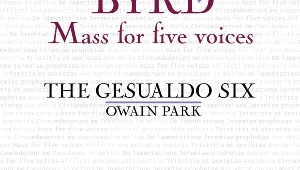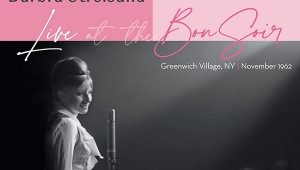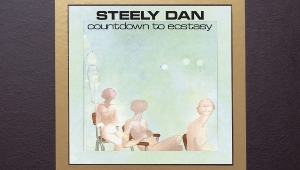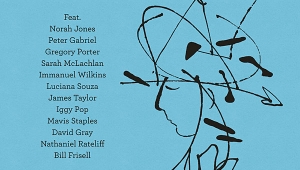| Columns Retired Columns & Blogs |
Recording of May 1990: Def, Dumb and Blonde
DEBBIE HARRY: Def, Dumb and Blonde
Sire/Red Eye/Reprise 9 25938-1 (LP), -2 (CD). George Tutko, Mike O'Hara, engs.; Mike Chapman, prod. AAA/AAD. TT: 63:57
Sire/Red Eye/Reprise 9 25938-1 (LP), -2 (CD). George Tutko, Mike O'Hara, engs.; Mike Chapman, prod. AAA/AAD. TT: 63:57
It's all too easy to see Debbie Harry reprising the Gloria Swanson role in Sunset Boulevard, or rehearsing a real-life remake of Nick Lowe's macabre obit to Marie Provost, a reclusive silent film star who outlived her moment in the sun and ended up a snack for her penned-in pooch ("Marie Provost," 16 All-Time Lowes, Demon Fiend CD20). Which raises the issue of comebacks, and the difference between the talent of a creative artist as opposed to a performing artist, and the difference between both of those and the contribution of the pop icon.
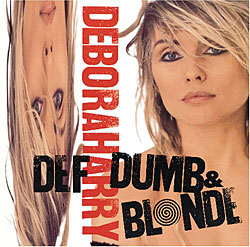 Which is not to say that fashion-idol Harry and the seminal Blondie, a 9-day wonder in the late 1970s, didn't have talent. Despite Harry's cover-girl history and paid-up Equity dues, Blondie the band oozed up from CBGBs, the primeval swamp of punk and New Wave and sleazoid metal thrash, like some Dance Monster from the Black Lagoon. Suddenly disco got respect. Studio 54 copped attitude and a one-time rock writer named Chryssie Hynde picked up licks at Blondie gigs in England. "You can, but not with me," intoned Harry ("I Know, But I Don't Know," Parallel Lines). And when Debbie oohed "I will give you my finest hour, The one I spent watching you shower" in "Picture This," around the world men otherwise somewhat laissez-faire about sex sprinted to turn on the tube. The band had creative talent, and Harry put it across.
Which is not to say that fashion-idol Harry and the seminal Blondie, a 9-day wonder in the late 1970s, didn't have talent. Despite Harry's cover-girl history and paid-up Equity dues, Blondie the band oozed up from CBGBs, the primeval swamp of punk and New Wave and sleazoid metal thrash, like some Dance Monster from the Black Lagoon. Suddenly disco got respect. Studio 54 copped attitude and a one-time rock writer named Chryssie Hynde picked up licks at Blondie gigs in England. "You can, but not with me," intoned Harry ("I Know, But I Don't Know," Parallel Lines). And when Debbie oohed "I will give you my finest hour, The one I spent watching you shower" in "Picture This," around the world men otherwise somewhat laissez-faire about sex sprinted to turn on the tube. The band had creative talent, and Harry put it across.
Which is a long way of saying that Def, Dumb and Blonde tries to recapitulate Debbie's days as a purveyor of other people's creations, and that, alas, her "product" is only as strong as they are. As the front-man for Blondie, she was an integral part of a band and a crucial voice in the creation and presentation of its material. As a singer today, she's lost her "bankability" and the labels want her to be a shop-soiled Madonna. (The video to the single "I Want that Man" is courtesy Mary Lambert, the hot-hit videographer who got That Girl in trouble with "Like a Prayer." Even worse, some bright-eyed A&R committee forced her to write a couple of tracks with the equally talentless Thompson Twins in a bid to kick-start some danceland hits.)
Despite her roles in Downtown Chic John Waters films and bookjacket blurbs for Timmy Leary and Iggy Pop, that long layoff in the '80s (an event forced on her as the band folded around an increasingly ill Chris Stein, her long-time "significant other" and collaborator) was compounded by two solo LPs that went nowhere. Consequently, her "comeback" is a sad mish-mash of other people's music, a few things old ("Bright Side" was written for her appearance on the TV show Wise Guy) and a variety of things shooting for new ("Get Your Way" would make crossover rap respectable, if hip hop hadn't already veered into "art rap" or whatever De La Soul is calling it, and the "Bigger the Deffer" mentality hadn't yielded to NWA's interpretation of assault with a deadly weapon about two years ago).
"Sweet and Low" is a club-oriented collaboration with female DJ Tony C which trades off both the girls' association with Jellybean, who, such is the small world of the New York–Eurodisco club scene, is best known for his music-and-persona creation of and subsequent social dumping by Sean Penn's recent ex. Blondie's original producer, Brit Michael Chapman (with Nicky Chinn, the men behind Blue Mink, the prototype for Milli Vanilli and all those flossily produced flavors-of-the-month which nevertheless manage to end up on the "all-time playlists" of the unconscious) has been imported to touch up the whole affair with spit, polish, and Forat Electronics. OK, the production is flawless, the sound crackles like bacon, and Harry delivers the goods with the pep of one of those sick-making Judy Garland/Mickey Rooney fantasies. She's a trouper, and a performing fool: the best tracks, like the CD-only "Bike Boy" and her own composition "Forced to Live," sizzle with a black-heart rage, and her sense of style is true, even if wildly outdated here. Seven of the fourteen songs are co-writes with Chris Stein, who also wrote an eighth ("Love Light," with guest vocals from label-mate rocker Ian Astbury of The Cult—clearly, either an insane invocation of Haitian religious ritual or evidence he was hanging around with David Byrne).
Which doesn't mean there aren't some excellent cuts on the LP like the contributed samba "Calmarie," or that as a live act Harry continues to outclass Cher, LaToyah Jackson, Liliane Monteveccio, and Lydia Lunch combined. Harry's got great eyes, ears, and opinions of her own, and she deserves better than going along with everyone else's ideas. This album is a mess, but it could force the Rockbird to find a voice. If so, the last ten years will just have been a European vacation (Harry remains big near Zürich). If not, look for Amaretto di Debbie ads in Spy.—Beth Jacques
- Log in or register to post comments


